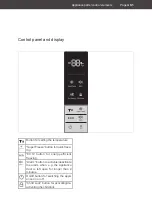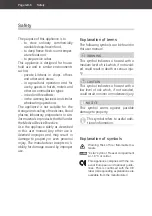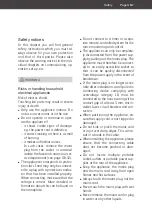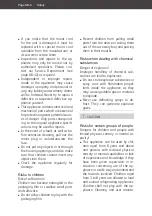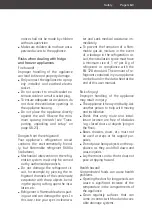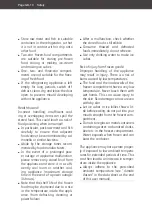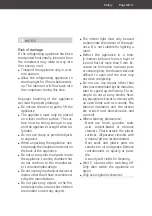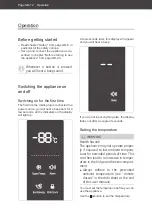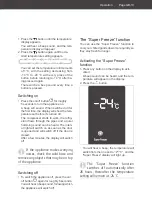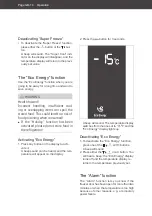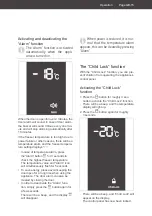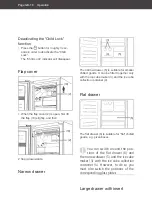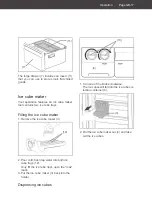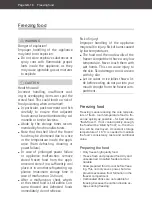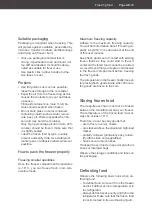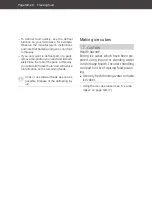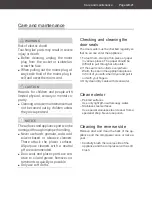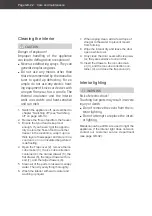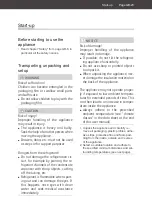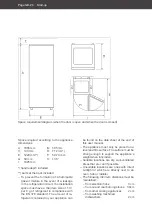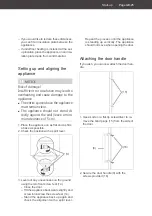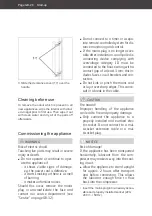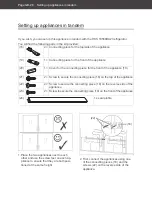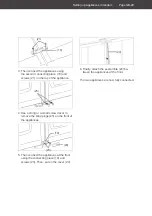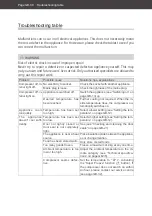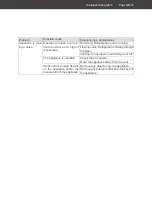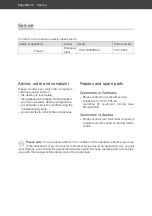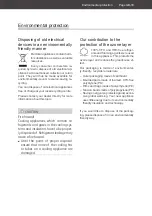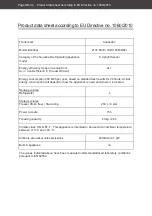
Suitable packaging
Packaging is important when freezing. This
will protect against oxidation, penetration by
microbes, transfer of odours and flavourings
and drying out (freezer burn).
• Only use packaging material that is
strong, impermeable to air and liquid, not
too stiff and labelled. It should be desig-
nated as suitable for freezer use.
• Use plastic clips, rubber bands or adhe-
sive tapes to seal.
Portions
• Use flat portions as much as possible;
these freeze through to the core faster.
• Expel the air from the freezer bag as this
causes the contents to dry out and takes
up space.
• Fill liquid containers no more ¾ full, be-
cause liquids expand when frozen.
• Do not store glass or metal containers
containing liquids such as water, lemon-
ade, beer, etc. Water expands when fro-
zen and may burst the container.
Only high percentage alcohol (from 40%
volume) should be frozen; make sure that
it is tightly sealed.
• Label the frozen food by type, quantity,
amount and expiry date. Use waterproof
marker pens or adhesive labels wherever
possible.
How to pack the freezer properly
Freezing smaller quantities
Once the freezer compartment temperature
is -18° C, you can freeze fresh, room-tem-
perature foods.
Maximum freezing capacity
Adhere to the maximum freezing capacity.
You will find information about “Freezing ca-
pacity in kg/24h” in the data sheet at the end
of this user manual.
Keep fresh goods out of contact with existing
frozen foods as they could start to thaw. If
contact with stored food cannot be avoided,
we recommend that you create a cold reserve
in the freezer compartment before freezing
the fresh goods.
The temperature in the freezer briefly rises af-
ter placing fresh goods inside. After 24 hours,
the goods are frozen to the core.
Storing frozen food
The deep-freeze chain must not be broken
between the manufacturer and your freezer.
The temperature of the frozen food must al-
ways be at least -18° C.
Therefore, do not buy any goods that
– are in frosty, over-icy chests.
– are stacked above the stipulated high-load
marker.
– partially clumped (particularly easy to iden-
tify with berries and vegetables).
– have snow and juice traces.
Transport frozen foods in special styrofoam
boxes or insulated bags.
Observe the storage conditions and times on
the packaging.
Defrosting food
Observe the following basic rules when de-
frosting food:
– To defrost food, remove it from the freezer
and let it defrost at room temperature or in
the refrigerator.
– Always defrost meat, poultry and fish in the
refrigerator. Make sure that the frozen food
is not immersed in its own thawing liquid.
Freezing food
Page GB-19
Содержание HGS18560DA2I
Страница 72: ......

